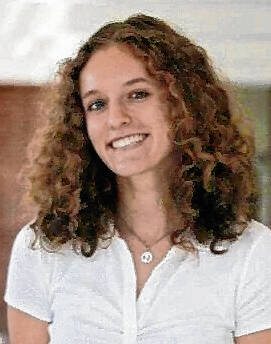Since middle school, I’ve heard celebrities, teachers, and activists scream “vote” into the void. Sometimes this was through social media, sometimes through bumper stickers, but it always lacked substantiality. Although I was 11 days too young to vote in the 2022 midterms, on my 18th birthday, I googled “register to vote” and followed the steps to complete an online application. Over a month later, I got my voter registration card in the mail. The process is accessible, but too difficult for a generation used to technological ease.
Imagine you’re an 18-year-old high school senior in Indianapolis filling out the voter registration application. Because you live in the city, you’re one of the 40.3% of Hoosiers your age without a driver’s license. You think about trying to get one this summer, but you’re going to one of the biggest state schools (Indiana University or Purdue University) and they charge for parking passes. So, you pursue the next option listed on the application: an Indiana State Identification Card.
You find your U.S. birth certificate or U.S. passport and your Social Security card, but to prove Indiana residency, you also have to bring two of the listed printed documents: a bill, bank statement, pay stub, or Medicaid/Medicare benefit statement. You’re a fulltime student with no job, and these aren’t easily accessible to you. As you continue to look through the voter registration application, you realize it must be submitted 30 days before the election. You, and many of your peers, weren’t even aware of this deadline.
How many students have given up when they reached these obstacles? Voter turnout is not reflective of passion. Gen Z cares deeply about the issues, especially, according to Pew Research Center, climate change, reproductive rights, and systematic racism. I’ve seen and experienced this at all levels, from protests to classroom discussions. The Tufts University statistic that Indiana had a 14% decrease in new registrations is not necessarily reflective of apathy, but rather, suppression.
Compared to other Midwestern states, where registration is booming, Indiana lawmakers are making it harder to vote. In 2019, they passed laws giving absentee voters fewer days to request a ballot, and in 2005 Indiana was one of the first states to require a photo ID. Further actions such as closing BMV branches, refusal to put polling sites on college campuses, and not sending notifications to individuals placed on inactive voter lists, are highly effective in Indiana, with our many rural areas and significant student population.
By demanding legislative action to address these obstacles, we can make long-term change. However, we can restructure outreach immediately with little comparative cost.
We should be using different algorithms to our advantage. Contrary to popular belief, we have to treat social media sites as separate entities. For example, unlike Facebook, Instagram and TikTok are more widely used for entertainment rather than information. This is a two-sided coin, meaning youth either receive their information about current events from more reputable news sites or they don’t receive it at all.
Perhaps the best way to reach the latter students, then, is through a teacher or professor. Providing resources (including printed materials) to educators on how they can use class time to get students registered could be more effective than reaching out to students directly. These efforts should begin at the college level, where there is more curricular freedom.
Our voices need to be heard. By recognizing and fighting to address the main obstacles to nonregistered voters, and restructuring our immediate methods of outreach, we can enfranchise the passionate yet underserved voting base of Hoosier youth.
Jillian Moore is a senior at Carmel High School and the winner of the Indiana Friends Committee on Legislation column writing contest. This commentary previously appeared at statehousefile.com. Send comments to [email protected].





